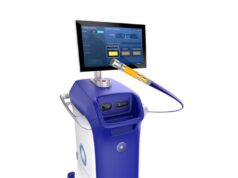Data from the MADIT-CRT (Multicentre Automatic Defibrillator Implantation Trial with Cardiac Resynchronisation Therapy) study, as reported in the Journal of the American College of Cardiology, indicates that there are six baseline factors that predict left ventricular ejection fraction (LVEF) “super response” in patients with a cardiac resynchronisation therapy with defibrillator (CRT-D) device.
Jonathan Hsu, Division of Cardiology, Department of Medicine, University of California-San Francisco, San Francisco, USA, and others aimed to identify (using data from the MADIT-CRT study, which showed that CRT-D could be beneficial in some patients with mild heart failure) patient characteristics that predicted LVEF super response to CRT in patients with mildly symptomatic heart failure. They wrote: “We also sought to investigate an association of LVEF super-response at 12 months with subsequent improvement in heart failure morbidity and survival.”
In Hsu et al‘s study, the super responders (191) had a mean absolute LVEF increase of 17.5±2.7% and all super responders (after 12 months of follow-up) had a LVEF improvement of ≥14.5%; responders (371) had a mean absolute LVEF increase 11.1±1.8% with an improvement of LVEF between 7.9% and 14.4%; and hypo responders (191) had a mean absolute LVEF increase of 4.4±3.2% with an improvement of LVEF of <7.9%.
The investigators identified six baseline factors that were associated with super responders: female sex, no prior myocardial infarction, QRS duration of ≥150ms, left bundle branch block on baseline ECG, body mass index (BMI) <30kg/m2, and smaller baseline left atrial volume index. Hsu et al noted: “To our knowledge, this is the first study to associate a lower BMI with cardiac reverse modelling attributed to CRT-D therapy. Because BMI is a complex variable composed of both height and weight, assessing its association with LVEF response may prove difficult.”
Additionally, Hsu et al reported that the primary endpoint (non-fatal heart failure event or all-cause death) occurred in five patients (2.6%) who were super responders, 29 (7.8%) responders, and 36 (19%) hypo-responders. They wrote: “These findings suggest that easily identifiable baseline factors are associated with LVEF super response on 12-month follow-up echocardiogram in patients with mildly symptomatic heart failure that meets other indications for CRT-D. Further, LVEF response itself may predict clinical outcomes, including heart failure or all-cause death.”
Hsu told Cardiac Rhythm News: “The predictors of super response in our study are important for implanters to know, as it may be especially helpful to know in advance who may respond to this therapy, especially in patients with mild heart failure symptoms. This information may be helpful when counselling the patient about the chance of a spectacular response to this therapy, especially in patients who may be hesitant to undergo this therapy, but may benefit substantially from it.”









